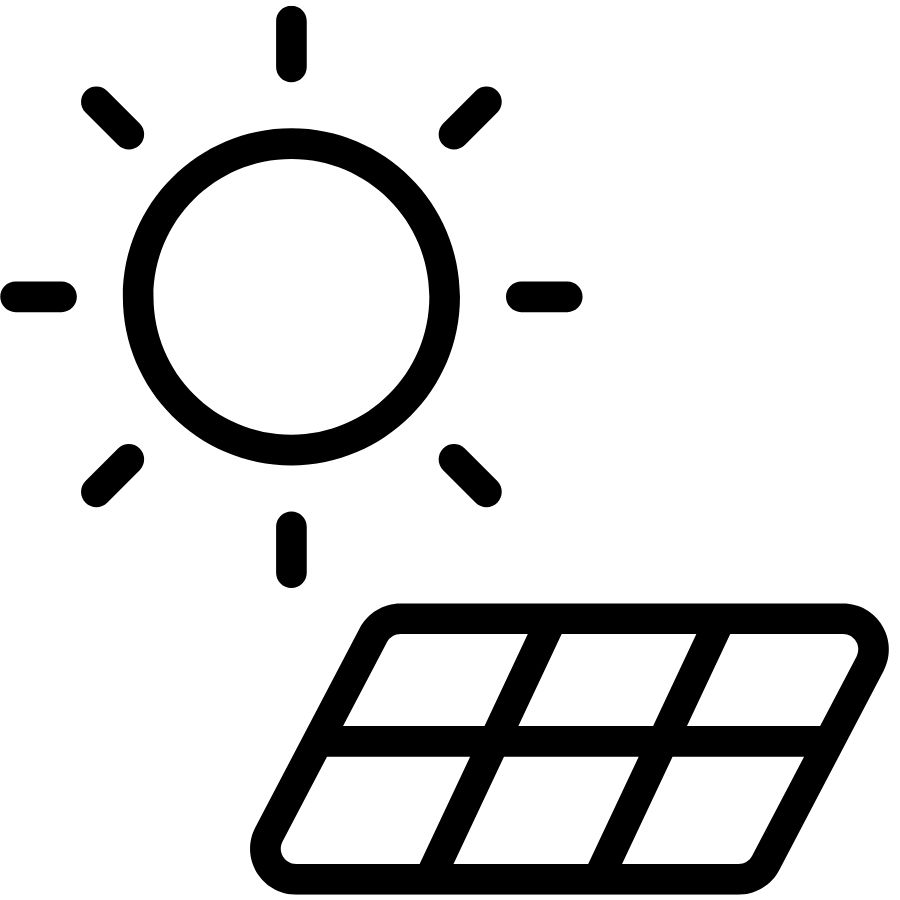Heard of the solar government grants? Amid global environmental challenges, many Canadians gaze to the skies – in practicality. Solar panels are becoming increasingly popular for households that aim to adopt a sustainable lifestyle. With the rise in renewable energy, Canada incentivizes its citizens through grants and rebates, effectively encouraging a proactive approach to reducing greenhouse emissions.
This article delves into the wide range of government grants available to Canadians, aiming to guide you on your journey to a brighter, greener future.
Why Solar Energy?
Solar energy has rapidly emerged as one of the alternatives to traditional fossil fuels. By harnessing the sun’s power, we can decrease our dependence on non-renewable resources and significantly reduce our carbon footprint. Here is why solar energy stands out:
Environmental Impact: Solar installations play a crucial role in decreasing greenhouse emissions. As more homes and businesses shift, the cumulative impact can be monumental in combating climate change.
Long-term Cost Savings: While the initial investment can be sizeable, solar panels are known to pay for themselves over time. The return on investment becomes increasingly tangible with potential solar rebates and reduced monthly energy bills.
Energy Independence: A solar system installed on your property can lessen your reliance on the grid. Again, this means that with the right solar PV system, you produce clean energy and get protection from fluctuating energy prices.
Synergy with Other Green Technologies: Solar energy doesn’t stand alone. Pairing a solar system with other efficiency upgrades, like air source heat pumps, can elevate a home’s energy efficiency to the next level. Such holistic approaches are better for the planet and get support from initiatives like the home energy loan program.
Understanding Government Solar Grants

Navigating the realm of government incentives might seem daunting, but with the right knowledge, it’s a path laden with rewards. Solar grants are financial aids offered by the government, meant to reduce the initial costs of adopting solar and other renewable power solutions.
The Essence of Grants: Unlike loans, grants, such as the Canada Greener Homes Grant, don’t need to be repaid. They serve as an investment by the government in a sustainable future. In addition, they promote energy efficiency and renewable initiatives among Canadian households.
Role in Renewable Push: These grants and solar rebates are integral to Canada’s commitment to reducing greenhouse emissions. By providing financial relief to those installing solar panels or making energy efficiency upgrades, the government is making renewable power sources more accessible to all.
Canada Greener Homes Grant: This initiative is a testament to Canada’s dedication to green living. The grant helps homeowners to retrofit their homes with solar installations, energy-efficient windows, and even air-source heat pumps. Whether considering a solar panel system or other energy efficiency upgrades, this grant can significantly offset the costs.
As we delve deeper into the nuances of the solar incentives landscape in Canada, it becomes evident that now is the golden age for homeowners to leap into a more sustainable future.
Federal Initiatives
Charting the Path with National Programs
Canada’s commitment to renewable power shows in community conversations and federal policy actions. These national programs help to bridge the economic gap for homeowners and businesses eager to adopt solar solutions.
The Canada Greener Homes Grant: As previously mentioned, this is one of the flagship initiatives that assist homeowners in installing solar panels and enhancing their solar power consumption. The grant facilitates the acquisition and installation of energy-efficient solutions, promoting a national shift toward sustainability.
Accelerated Capital Cost Allowance (ACCA): The ACCA is a commercial solar tax incentive, particularly of interest to businesses. It allows businesses to claim a declining balance depreciation on solar power systems. By leveraging this tax incentive, a business can recoup its investments in renewable energy infrastructure more rapidly. It makes the commercial adoption of solar panels a more financially attractive option.
Other Federal Rebates and Incentives: Beyond these mainstays, the Canadian government periodically introduces solar rebates and schemes to incentivize the broader adoption of renewable power. These might cater to specific sectors or connect to nationwide sustainability targets. Regularly checking official portals or seeking consultation can help identify new upcoming opportunities.
Provincial and Territorial Solar Grants

Diverse Regions, Unified Vision
While federal initiatives lay the groundwork, the provincial and territorial programs bring nuance to Canada’s renewable power landscape. These regional efforts often address unique energy needs and their respective areas’ challenges.
Solar Rebates by Province
Most provinces, recognizing the importance of solar energy, offer solar power rebates. These rebates vary in value and eligibility criteria, but their goal is the same: to make solar power systems more affordable for residents.
Ontario: Known for its robust renewable power policies, Ontario provides a range of incentives for households and businesses to offset the costs of solar panel installations.
Alberta: With abundant sunlight, Alberta is perfectly poised for solar expansion. The province’s rebate programs have been instrumental in driving up solar energy consumption among its residents.
British Columbia: BC’s focus on green energy has seen the province roll out a series of solar rebates, making it easier for homes and businesses to harness solar power.
Territorial Push
While territories might have different climatic challenges than provinces, their commitment to renewable energy remains unwavering. Through specialized grant programs, these territories are making strides in integrating solar solutions tailored to their unique needs.
Eligibility Criteria
Navigating the Fine Print
While the allure of solar grants and rebates is undeniable, understanding the eligibility criteria is crucial to ensure successful applications and maximize benefits.
Ownership & Location: Generally, both homeowners and businesses can benefit from solar rebates, but there might be specifications on the type of property or its location. For instance, some grants might cater exclusively to urban or rural settings.
Solar Panel Specifications: Not all solar panels are made equal. Some grants and rebates require the installation of specific types or brands of solar panels to ensure optimal solar power consumption and longevity.
Prior Energy Assessments: Before availing of certain rebates, homeowners might need to conduct a thorough energy assessment of their property to gauge its current energy efficiency. Such evaluations offer insights into how solar installations can best benefit a property.
Integration with Other Renewable Sources: Some grants, especially those promoting broader renewable energy objectives, might require homeowners or businesses to integrate solar power systems with other renewable energy sources or adopt specific energy-saving practices.
Understanding and navigating these federal and provincial initiatives can seem overwhelming. However, the journey toward sustainable living becomes clearer and more attainable with the right resources and diligence.
Application Process
Stepping Towards a Sunlit Future
Harnessing solar energy is undoubtedly a promising move towards sustainability. However, securing a solar energy rebate or grant involves a meticulous process that demands attention to detail and understanding. Here’s a step-by-step guide to navigate the application journey:
Initial Research: Begin by familiarizing yourself with available grants, such as the Canada Greener Homes Initiative. This primary step aids in aligning your energy needs with the most appropriate rebate or incentive.
Conduct an Energy Assessment: You gauge your property’s current energy efficiency before applying for most rebates. An assessment highlights areas for improvement. Furthermore, it provides valuable data for the application, demonstrating your commitment to reducing energy consumption.
Choose the Right Solar Power System: Once you have clarity about your energy needs, select a solar power system that matches the requirements of the grant or rebate you’re targeting. Ensuring compatibility is crucial to a successful application.
Gather Necessary Documentation: Collate all necessary documents, which might include energy assessments, invoices for equipment, proof of property ownership, and more. Make sure all documents are updated and authentic.
Complete the Application: Fill out the application diligently, ensuring all fields are accurate. Many grants and rebates have online application systems, which streamline the process and allow for electronic submission of necessary documentation.
Stay Updated & Respond Promptly: After submission, it’s essential to keep track of your application’s status. Respond promptly to any queries or requests for additional information to expedite the approval process.
Maximizing the Benefits
Going Beyond Just Solar Panels
A solar power incentive can significantly alleviate the initial costs of adopting renewable energy systems. Moreover, to truly maximize the benefits of the transition, one must look beyond just installations.
Combining Incentives: Whenever possible, combine federal and provincial grants. For instance, while you might receive a solar power rebate at a provincial level, there might also be federal incentives that apply to the same installation.
Additional Energy-Saving Measures: While solar power systems are transformative, integrating other energy-saving measures can amplify the benefits. Simple steps can further reduce energy consumption and amplify savings. Such steps include improving insulation, using energy-efficient appliances, or adopting smart home technologies.
Maintenance & Monitoring: The effectiveness of a solar power system doesn’t end with installation. Routine upkeep guarantees the system’s peak performance. Moreover, monitoring systems allow homeowners to understand their energy patterns better and make informed decisions to improve energy efficiency.
Looking Ahead – The Future of Solar Power in Canada
The Horizon Glows Bright
Solar power, once a fringe idea, has firmly taken root in the Canadian psyche. And given the country’s commitment to curbing greenhouse gas emissions and promoting sustainable living, this trend is poised to intensify.
Predicted Growth: As technology advances and costs drop, an increasing number of Canadian households and businesses are expected to adopt solar power systems. This, coupled with the ongoing incentives, means the nation’s solar capacity is set to soar.
New Incentives on the Horizon: The success of programs like the Canada Greener Home initiative suggests that more such incentives could emerge. These might focus on installation and innovative technologies, energy storage solutions, and solar power integration with other renewable energy systems.
Community Solar Projects: Beyond individual households and businesses, the future might witness a rise in community-based solar projects. It will happen when neighborhoods collectively invest in and benefit from solar power system installations.
The journey towards a sustainable, solar-powered future is filled with possibilities. With the Canadian government’s unwavering support and the nation’s collective commitment to a greener tomorrow, the roadmap is clear and promising.
Bottom Line
As the global environment faces unprecedented challenges, Canada stands as a beacon of hope, championing the shift towards renewable energy, particularly solar power. The range of government grants and incentives, from the Canada Greener Home initiative to provincial rebates, underscores the nation’s dedication to a sustainable future.
These financial aids and a growing awareness among Canadians pave the way for the widespread adoption of solar power systems. As technology evolves and solar becomes even more accessible, every Canadian household and business can play a role in reducing energy consumption and curbing greenhouse gas emissions.
The sunlit path to sustainability is clear, and with collective effort, the nation can harness its full potential. In this era, the opportunity to contribute to a greener Canada is not just a privilege but a shared responsibility.
